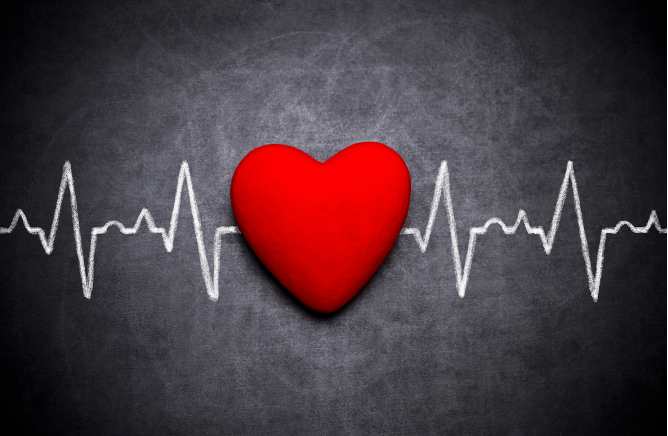For quite some time now, we have witnessed remarkable outcomes through the utilisation of heart rate variability (HRV) in the realm of fatigue management. The effectiveness of HRV is well-established in regard to the outcomes we achieve here at Specialised Health, but it is equally important for us to stay informed about the latest research findings. We find it both fascinating and comforting to explore the current landscape of HRV research in the context of fatigue.
That’s why we decided to take a fresh look in 2023 and explore the recent research on HRV in the context of fatigue. By staying abreast of the latest findings, we can continue to refine our understanding and application of HRV in optimising fatigue management strategies.
Firstly, does HRV really provide a reliable measure of fatigue?
We’ve chatted before about the relationship between HRV and fatigue – for a refresher, check out our blog here. Basically, it is believed that HRV provides insights into the functioning of the autonomic nervous system, which impacts important bodily functions – such as energy and fatigue. Therefore, understanding HRV can help us identify and understand fatigue better. However, it’s been some time since we last delved into the research on this topic. So, what has recent research uncovered? Let’s find out!
In the context of long COVID (which remember, did not exist just a few years ago…), research has found that individuals with long-term COVID-19 symptoms had lower HRV, indicating a disrupted balance in the autonomic nervous system. This imbalance involved increased sympathetic activity (the “fight-or-flight” response) and decreased parasympathetic activity (responsible for relaxation and recovery). Short-term HRV analysis was proven in this study to be a reliable way to assess and monitor long-COVID effects (6). HRV has also been found to be a reliable predictor/measure of fatigue in cancer patients. A study on lung cancer patients undergoing chemotherapy, published in April 2023, found that subjective measures of fatigue correlated with HRV data – authors suggesting that HRV as an objective fatigue monitoring method may enable clinicians to more effectively monitor and handle fatigue problems in this space (8).
A 2020 study that focused on CFS/ME found that patients with CFS/ME had lower HRV when compared to healthy individuals. The study also identified a correlation between HRV measurements and self-reported symptoms of fatigue. Specifically, higher levels of fatigue were associated with specific HRV indices, indicating a connection between autonomic dysfunction and fatigue severity in CFS/ME (3). Taking a step beyond static measures, a 2022 study in chronic fatigue syndrome (CFS), explored on-going factors related to long-term non-improvement in fatigue. Researchers examined self-reported activity patterns, emotional experiences, and autonomic function. They discovered that individuals who didn’t show improvement overtime had lower HRV than those who did improve (4).
If your brain is hurting, let us summarise – these studies further support that yes, HRV does provide a reliable measure of autonomic function and fatigue, across many different causes. Whether it be post-viral, cancer related or CFS, HRV provides us with an objective measure of fatigue.
Secondly, is measuring HRV actually useful in practice?
Okay great, so when it comes to objectively measuring fatigue, HRV proves to be a reliable indicator. However, this is just the initial step in the process. Recent research regarding the practical application of HRV in clinical settings, we must say, is somewhat limited. . . There is some research suggesting that many people with CFS/ME have started using heart rate and activity tracking (and with great results might we add), but when faced with HRV this research suggests individuals may lack the knowledge and confidence to use it (1).
Nevertheless, despite clinical research often lagging behind (sigh), research conducted in other areas, in regard to HRV use specifically, is highly promising. Studies exploring fatigue-inducing work environments, including professions like drivers, construction workers, and armed forces personnel, have examined the use of HRV as a tool for identifying and predicting fatigue. These studies demonstrate that HRV can offer valuable insights into monitoring fatigue levels and implementing preventive measures to mitigate associated risks (5, 7, 9). In the realm of elite athletics, HRV has proven to be a valuable asset in effectively managing training loads and optimising recovery.
Excitingly, while the current research on on-going HRV application is not specifically focused on clinical settings, it showcases the promising potential of this approach. But wait, there’s more! Ongoing research is actively exploring the benefits of HRV tracking for individuals with long COVID. A notable study currently underway aims to assess the feasibility and effectiveness of utilising HRV biofeedback techniques, including a standardised slow diaphragmatic breathing program, to manage symptoms associated with long COVID (2).
Watch this space!
Although we can’t predict the future, we can’t help but anticipate that our next research review will bring forth even more positive findings. Not only that, but next week we are taking a step from quantitative, to qualitative to share what our customers have to say about their own experiences with HRV and fatigue management. So stay tuned!
Author: Tessa Nielsen
Clinical Exercise Physiologist and
Content Creator at Specialised Health
References:
- Clague-Baker, N., Davenport, T., Madi, Dickinson, K., Leslie, K., Bull, M., & Hilliard, N. (2023). An international survey of experiences and attitudes towards pacing using a heart rate monitor for people with myalgic encephalomyelitis/chronic fatigue syndrome. Work, 74(4), 1225–1234.
- Corrado, J., Halpin, S. J., Preston, N., Whiteside, D., Tarrant, R., Davison, J. E., Simms, A. D., O’Connor, R. C., Casson, A. J., & Sivan, M. (2022). HEART rate variability biofeedback for long COVID symptoms (HEARTLOC): protocol for a feasibility study. BMJ Open, 12(11), e066044. https://doi.org/10.1136/bmjopen-2022-066044
- Escorihuela, R. M., Capdevila, L., Castro, J. R., Zaragozá, M. C., Maurel, S., Alegre, J., & Castro-Marrero, J. (2020). Reduced heart rate variability predicts fatigue severity in individuals with chronic fatigue syndrome/myalgic encephalomyelitis. Journal of Translational Medicine, 18(1). https://doi.org/10.1186/s12967-019-02184-z
- Friedberg, F., Adamowicz, J. L., Bruckenthal, P., Milazzo, M. F., Ramjan, S., & Quintana, D. (2022). Nonimprovement in Chronic Fatigue Syndrome: Relation to Activity Patterns, Uplifts and Hassles, and Autonomic Dysfunction. Psychosomatic Medicine, 84(6), 669–678. https://doi.org/10.1097/psy.0000000000001082
- Lecca, L. I., Fadda, P., Fancello, G., Medda, A., & Meloni, M. (2022). Cardiac Autonomic Control and Neural Arousal as Indexes of Fatigue in Professional Bus Drivers. Safety and Health at Work, 13(2), 148–154. https://doi.org/10.1016/j.shaw.2022.01.007
- Marques, K. C., Silva, C. M., Da Silva Trindade, S., De Souza Santos, M. C., Rocha, R. B., Da Costa Vasconcelos, P. F., Quaresma, J. a. S., & Falcão, L. M. (2022). Reduction of Cardiac Autonomic Modulation and Increased Sympathetic Activity by Heart Rate Variability in Patients With Long COVID. Frontiers in Cardiovascular Medicine, 9. https://doi.org/10.3389/fcvm.2022.862001
- Moshawrab, M., Adda, M., Bouzouane, A., Ibrahim, H., & Raad, A. (2022). Smart Wearables for the Detection of Occupational Physical Fatigue: A Literature Review. Sensors, 22(19), 7472. https://doi.org/10.3390/s22197472
- Shih, C., Chou, P., Chen, J., Chou, T., Lai, J., Lu, C., & Huang, T. (2023). Cancer-related fatigue classification based on heart rate variability signals from wearables. Family Medicine and Primary Care, 10.
- Umer, W., Yu, Y., Antwi-Afari, M. F., Jue, L., Siddiqui, M. K., & Li, H. (2022). Heart rate variability based physical exertion monitoring for manual material handling tasks. International Journal of Industrial Ergonomics, 89, 103301. https://doi.org/10.1016/j.ergon.2022.103301
Further reading:
Stress, Self Care and HRV. A Case Study!
New to HRV? 5 Things To Get You Started
Or check out our ‘blog‘ page and use the search bar to type in the keyword ‘HRV’ for more great reads!
#exercisephysiology #exerciserehab #rehabilitation #lifeinsurance #incomeprotection #ctp #workcover #mobile #mobileexercisephysiology #fatigue #mentalhealth #cancer #musculoskeletal #injury #pain #physio #physiotherapy #Sydney #Brisbane #Melbourne #Adelaide #Auckland #Waikato #BayofPlenty #Wellington #Otago #Christchurch



